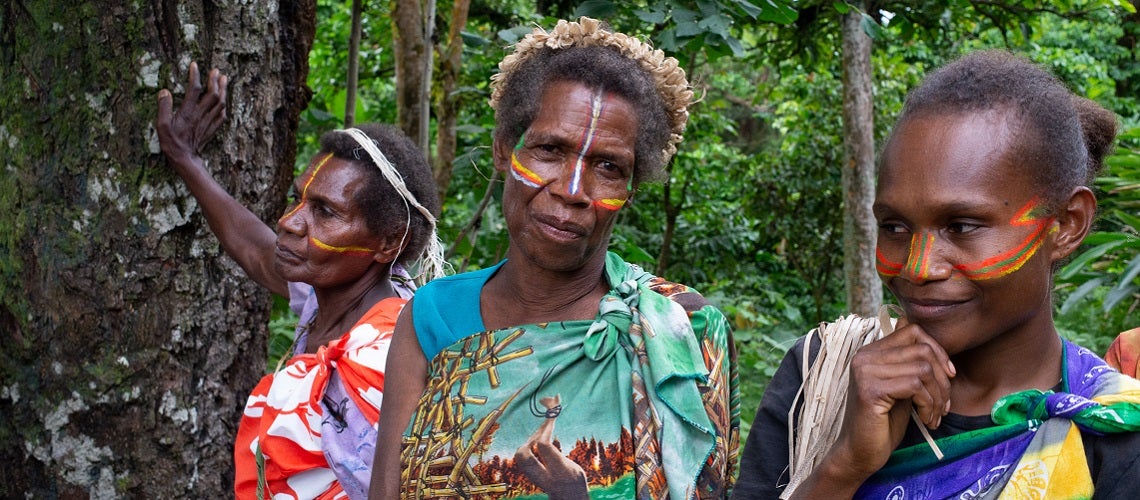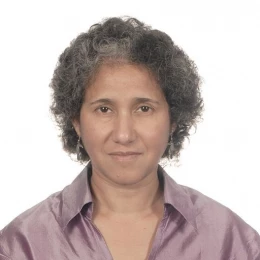 Vanuatu women in the forest
Vanuatu women in the forest
This fiscal year, the World Bank Group’s first-of-its-kind Action Plan on Climate Change Adaptation and Resilience comes into effect. This interview is part of a series reflecting on our work supporting countries to adapt and build resilience to a changing climate, focusing on early efforts, current projects and future innovations that aim to protect communities around the world.
Hear from Habiba Gitay, Senior Climate Change Specialist, whose work over the years has focused on providing strategic direction on climate resilience and integrating climate resilience into development in various countries. She was the coordinating lead author of three assessment reports of the Intergovernmental Panel on Climate Change and led the Technical Report on Climate Change and Biodiversity.
1. As a pioneer on adaptation and resilience at the Bank, what led you to the realization that you needed to include resilience thinking and approaches in your work? What motivated you to keep going?
In 1993, as a scientist and researcher and through serendipity, I became a coordinating lead author for the Second Assessment Report of the Intergovernmental Panel on Climate Change (IPCC). Our task was to assess the published literature for impacts of climate change on arid ecosystems and propose adaptation options. In 1996, at an outreach event in Australia, I recall everybody talking about the importance of reducing greenhouse gas emissions, namely mitigation, with little discussion of climate change impacts and the need for adaptation. This was not a good sign for people and ecosystems; especially as our report had found that many facing ongoing pressures - such as land and water degradation – were being impacted by the changing climate and becoming more vulnerable.
In 1997, I was part of a team that shaped the IPCC’s Third Assessment Report. Given the observed impacts highlighted in the previous report, there was a clear need to bring more focus and attention on impacts, vulnerability and adaptation. We were able to capture this in the change in the title of the report - from “Impacts, Adaptations and Mitigation of Climate Change: Scientific-Technical Analyses” to “Impacts, Adaptation and Vulnerability”– a title that is still used today.
The Third Assessment Report, completed in 2001, clearly showed the impacts of climate change on ecosystems, societies and all regions of the world. The Synthesis Report from that assessment - for the first time - brought together a team of 25 authors from all the three Working Groups of IPCC to address questions posed by policy-makers, cementing the need for adaptation but advocating for it to be within the context of development.
Making development climate-resilient was a major milestone in our thinking and approach as opposed to stand-alone adaptation. I was fortunate enough to become involved in the development agenda and join the World Bank in 2007. A large institution like the Bank can make changes at a scale that is hard to match.
2. Are there aha-moments in your work on resilience where you felt what you were doing led to results or some significant insights and influenced others?
In 2012, I started work on the Climate Change Special Theme for IDA17. I kept in mind what a wise colleague said to me: to change the Bank, influence the procedures. I looked at what the Gender Theme had achieved in IDA and asked if we could take a similar approach to bring climate risk and resilience into IDA operations. The work paid off, contributing not only to a successful replenishment of IDA17, but also putting in place the requirement to screen all IDA operations for climate and disaster risks and to include actions, as necessary, to reduce that risk in the design of operations. Around the same time, the Bank also committed to “climate co-benefit” targets, which was another big and complementary change.
Over the past three years, I have also had the pleasure to talk directly with beneficiaries in the Pacific. In Vanuatu, in a remote area under the shadow of an active volcano, an old woman held my arm and told me how she can now get back home from the markets on the steep slope of a track - which a project had helped seal - without slipping and sliding every time it rains. In Samoa, this year, women told us how the extra cash and what they learned from their village’s climate resilience project funded through the Pilot Program for Climate Resilience (PPCR) had helped them better manage effects of recent cyclones and the COVID-19 restrictions. Hearing women in these countries describe what resilience means in reality has been rewarding and has led to multiple “aha” moments.

3. What advice would you have for project staff across sectors and regions to integrate adaptation approaches, resilience thinking and climate risk management in their work?
My advice is evidence-driven: climate change and its increasing impacts are eroding development gains. Climate change is not something to brush aside, and it needs your attention.
As countries recover from COVID-19 impacts, be creative, think outside the box and see how resilience – to economic, social, environmental, climate and disaster risks – can be included in any operation. Get somebody to look at the concept stage project document and consider how small adjustments can give you that overall resilience. Secure some technical assistance to identify potential solutions in any sector or do a retrospective to see what has worked and not worked over the past decade or so of implementing “adaptation” projects. This will help you create operations that reduce poverty and make development climate and disaster resilient and sustainable.
4. What are your thoughts on climate adaptation and resilience in our current reality of the pandemic, and on what can be prioritized post-COVID?
COVID-19 may well be here for some time but if we don’t reduce emissions and start adjusting to the impacts of climate change, the poorest people in the world will become poorer and more vulnerable. Our operations to respond to COVID-19 include strengthening health systems, which can dovetail nicely with for example strengthening landscape or watershed management to provide clean and secure water supply, increase food production while conserving biodiversity and improving human well-being. We know how to do multi-sectoral investment projects: let’s scale-up the use of policy operations and technical assistance to build on the results of investment projects to facilitate long-term changes towards resilient and sustainable development.


Join the Conversation